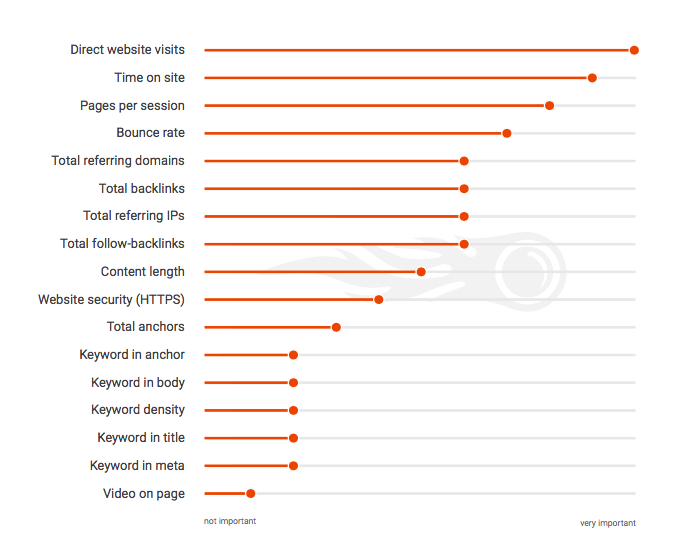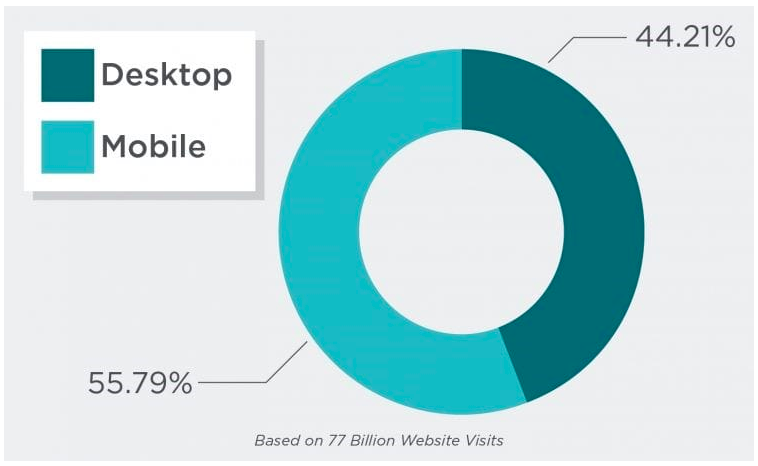Strategy
The SEO Factors You’re Probably Ignoring
If you want to build something that lasts, you start with the foundation. A roof isn’t installed without solid framework. A garden isn’t planted in soil that isn’t fertilized. But when brands aim to build SEO into their content strategy, they don’t always ensure that the backend of their site is as strong as the stories they want to produce.
Last summer, SEMRush produced a study on the most impactful ranking factors. The data showed that using exact keywords on a page didn’t offer the same SEO value as other engagement-driven factors.
These insights suggest that publishing engagement content is more important than optimizing the technical aspects of your site. That’s true to an extent, mostly for well-known sites that get plenty of backlinks. But for a lot of sites, this isn’t the reality. In those cases, the structural integrity of your blog or company page is crucial. If you set up your site carefully and effectively, then you make it so much easier to reap the benefits if your content starts to drive serious engagement.
Most people are familiar with keywords, backlinks, and bounce rate. But if you really want to master SEO, here are 5 factors worth exploring.
Metadata
Metadata (or data about data) is how a search engine validates the relevancy of your content compared to what’s promised in the page’s code. Meta tags can be used for a number of different things, but that doesn’t mean every single one is worth including. The current area of interest is the apparent increase in the length of a meta description that Google displays on SERPs beneath a page title. Previously, a 155-character description was seen the most within page-one results. Starting in in late November 2017, Google seems to be ushering in SERPs with descriptions peaking at over 300 characters.
Even though meta descriptions are not a ranking factor, writing ones that stay on trend with the latest algorithms is vital for making sure competitors aren’t edging you out with more valuable copy.
Site speed
We all love dazzling interactive Java and CSS, but too much of it can cost you if those files aren’t compressed and minified. Almost a decade ago, Google confirmed that site speed does, in fact, influence SERPs. People want instantaneous load times, and Google wants to prioritize results that will delight those users. If your site loads faster than a competitor’s for a page with similar information, that may be enough for you to rank ahead. This SEO factor is only growing in importance. Google announced that come July 2018, speed will also factor in for mobile search.
Schema markup & structured data
In addition to metadata, pages also have smaller elements called microdata that can be classified using semantic vocabulary. As IronPaper explains it, metadata tells search engines what the page is about; microdata reveals what elements are on the page.
We can take care of these elements by using Schema markups. Meta tags are able to validate what your site can broadly offer a user, but Schema refers to a particular technology that provides granular, structured data about your page.
Schema offers an incredibly robust library, but much like meta tags, there’s no need to include every one applicable to your site. The key is assessing which handful of items are most important for your piece. Rather than stuffing an article with a particular keyword, you can use a schema markup to signal that you want the piece to rank for pages that include things like company names, products, and places.
Site architecture
For those of us who aren’t UX wizards, setting up a completely logical site map is daunting, especially if the site is large. Fortunately, you can write a file called robots.txt to tell search engines how you want them to crawl your site.
For example, certain parts of your site, like duplicated content or a convoluted directory, could hurt your SEO potential. To cover these issues up, look into the disallow feature. It’ll let you hide that content from search results without having to delete anything from your site.
Just remember that robots.txt can be a double-edged sword if used incorrectly. Blocking directories that contain useful content and quality backlinks could wind up setting you back.
Mobile-first indexing
Perhaps the most compelling reason to check in on the structure of your site is Google’s impending introduction of mobile-first indexing. In 2017, mobile traffic topped desktop traffic for the first time, per analysis by SimilarWeb. That trend is not going to change anytime soon.
For this reason, Google will soon use your mobile site as the primary version when indexing your content. (Check out this helpful FAQ Bridget Randolph wrote for Moz for more information). In other words, building a site with mobile in mind is no longer a best practice—it’s mandatory.
Image by iStockPhotoGet better at your job right now.
Read our monthly newsletter to master content marketing. It’s made for marketers, creators, and everyone in between.







